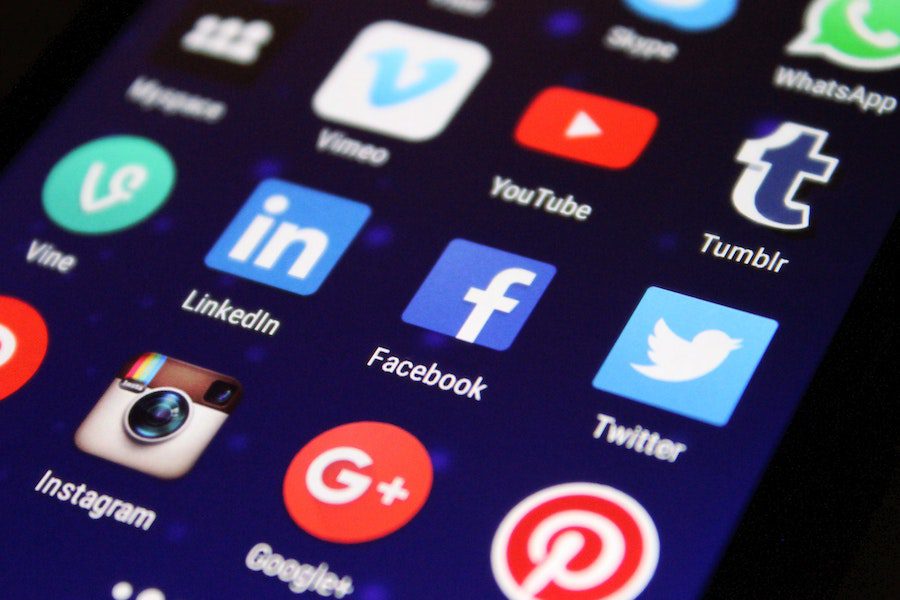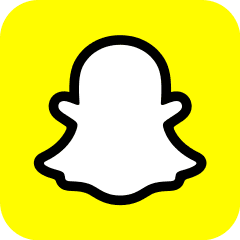History of Social Media – Retrospecting The Milestones
What’s the first thing you did this morning? Check your social media accounts maybe? Well, you’re not alone. Social media has become an inseparable part of our daily lives. Whether it is to check news updates, share travel stories, find video tutorials, or even for a quick boost of inspiration, social media has woven into the very essence of our lifestyle in the digital era. But have you ever wondered where it all started?

Who was it that first thought of the idea of creating a platform where people could connect with their friends or make new friends? If you thought it was Mark Zuckerberg with Facebook, you’re wrong. Because, as surprising as it might sound, the idea of social media and social networking existed long before Facebook.
And today not just consumers but businesses are chasing after social media trends. They are trying to expand their presence and venture into all the social media platforms that their target consumers use every day. The past decade has been quite a ride for the social media realm.
With Social Media Day coming very soon (June 30), we thought of taking a moment to retrospect the awe-inspiring history of social media. The many milestones, the many platforms, and their origin stories. The platforms that came and conquered. The ones that faced away after a short-lived glory.
So, are you ready to travel back in time with us? Let’s get started.
- SixDegrees – the forerunner of the social media networking
- The era of Friendster
- The birth of MySpace
- The Friendster contender we all know – Facebook
- When microblogging became a trend – with Twitter & Tumblr
- For premium and professional experiences – LinkedIn
- Video sharing redefined through YouTube
- A new kind of location-based social media network – Foursquare
- Instagram changes the way people share photos
- Social media for idea generation – Pinterest
- Taking the “fun element” seriously – Snapchat
- The beginning of the short-form video era – TikTok
- Special mentions
- The ones that didn’t make it
- Takeaways from the history of social media
SixDegrees – the forerunner of the social media networking
About 24.6% of social media users are Gen Z. With that data in mind, can you believe that the idea of social media was born even before Gen Zers were born? Yes, Six Degrees which is considered to be one of the forerunners in the world of social networking was launched in 1997.
The idea of SixDegrees was based on the idea of six degrees of separation which theorizes that any two people can be connected through six or fewer social connections. Materializing this theory the SixDegrees platform allowed people to create profiles, add friends and invite friends to the platform. There was also a messenger within the app and the option to add bulletin items – something similar to the Feed format we are used to today.
When the makers of SixDegrees launched the platform and initiated the trend of social networking, little did they know that they were creating a ripple that would shape how people would communicate in the future.
The era of Friendster
Friendster is one of the most popular names in the history of social media. Because we know well that teenagers are the most attracted to social media and most millennials were teenagers when Friendster was introduced. So, this is a name that’s sure to make them nostalgic.
Friendster was founded in 2002 by Jonathan Abrams. The idea was quite similar to that of SixDegrees. People could make new friends and connect with their friends and family. Months after its launch in 2003 Friendster gained over 3 million users.
Abrams developed the idea of Friendster from his own struggle with networking when he moved to Silicon Valley from Canada. The idea was a huge hit and within a year, Google offered $30 million to acquire Friendster but Abrams turned down the offer. A decision that could probably have changed the fate of the social media platform!
All was well until Facebook happened! After Facebook, Friendster slowly started losing its glow, especially among the American audience.
The company responded by changing the people on the board and by switching to a different brand strategy. Friendster which was once about networking became a site about gaming in 2011. Part of the reason behind this brand pivot was to tackle the competition from Facebook and to offer something that Facebook was not offering back then – gaming. But that idea did not help Friendster either. The site was shut down in 2015. Yet it remains a well-remembered name in the history of social media.
The birth of MySpace
MySpace was founded by Chris DeWolfe, Tom Anderson, and Jon Hart (all employees of eUniverse back then) in 2003. The idea of MySpace came from the success of Friendster and social networking. The website was initially used by eUniverse employees and slowly the site gained traction.
MySpace brought in a lot of fresh features that set it apart from Friendster. This includes:
- Personalization – MySpace allowed users to change the aesthetics of their profile page.
- The ability to create forums and groups for discussions helped MySpace emerge as a better option in terms of community building through social media.
- In addition to sending messages, users could also share music, listen to music or even create and share custom playlists within their network.
While these might sound like things you do on almost all social media platforms today, back then they were a huge deal. And MySpace was definitely a trendsetter in the history of social media. Though not as popular as its counterparts today, MySpace still has its place in the social media world.
The Friendster contender we all know – Facebook
Facebook, (which was FaceMash back then), was founded by Mark Zuckerberg in 2003. Yes, it has been 20 years since this social networking site came into existence. When it was first introduced, it was so much different from what it is today. It was launched as a “hot or not” idea for Harvard students to rate profiles based on how attractive they were.
A year after the launch of FaceMash, Zuckerberg evolved his idea and Facebook was born. Then came the domain registration and the expansion and finally, Facebook was available to the public in 2006. Even before that the site already had over 6 million users.
Today the site has over 2.95 billion monthly active users and stands as the most-used social media platform in the world. We can safely say that, in the history of social media, Facebook changed the course of things.
Facebook is often seen as the core rival that led to the downfall of Friendster. While we know what Facebook looks like today, what aspects of Facebook helped it gain an advantage over Friendster in the past? We’ll tell you:
- An easy user interface – from creating an account to managing connections everything was simpler.
- Facebook also introduced privacy controls that let people control who viewed their profile and content which was lacking on Friendster.
- One of the main differences was the option to “Like” a post to express an opinion.
When microblogging became a trend – with Twitter & Tumblr
With the sudden rush of social media platforms people were overwhelmed. This was the time when the idea of microblogging gained pace. Blogging was quite common then but a hybrid version of blogging and social networking was not.
Twitter is one of the most notable names in the history of social media for popularizing the idea of microblogging. The concept was based on the idea of communicating with a group of people through an SMS.
Take a look at the first-ever Tweet that set things in motion for Twitter. When it started, Twitter had a 140-characters limit for the posts.
Released by Odeo in 2006, it was called Twttr when it was launched. The trend of announcing what one was doing in the form of a short text started with Twitter. People started using the platform to share news updates, initiate conversations with the people in their network, and so on. Today Twitter stands as one of the top social media platforms with 237.8 million monetizable daily active users.
Right when Twitter was taking shape in the social media realm, Tumblr came into existence. Founded by David Karp in 2007 Tumblr quickly gained popularity. While Twitter was focusing on text-based posts in its early years, Tumblr evolved the idea of microblogging with visuals. Like MySpace Tumblr also allowed users to personalize their profile pages and added an option to reblog.
One other area where Tumblr differed from Twitter was the option to follow accounts and see posts from these accounts first on the Feed. Twitter, however, had a chronological display of posts in its early days.
For premium and professional experiences – LinkedIn
Did you know that LinkedIn is older than most social media platforms including Facebook? Yes, it was launched in 2003 with the objective of creating a network for professionals to connect. Reid Hoffman conceived the idea of a professional networking site and within a year the site had 1 million users.
While the rest of the social media platforms in those days were seen as dating sites and places for people to make friends, LinkedIn was about expanding one’s professional network. It was particularly popular among job seekers looking to connect with potential employers.
LinkedIn was one of the first social media sites to introduce the subscription model for exclusive features. Today LinkedIn has expanded to more than 200 countries and has over 930 million users.
Video sharing redefined through YouTube
One brief look at the history of social media and you’ll notice that the ones that made it big are those that introduced something new. Going by this, YouTube took the road less traveled and introduced a new form of social media platform that allowed people to share videos with the world.
Founded by Chad Hurley, Steve Chen, and Jawed Karim in 2005 YouTube did start out as an online dating site like most other social media platforms. But when the idea did not pick up and when the founders noticed the absence of platforms that allowed users to find videos on the internet, YouTube was born.
The below video uploaded by Jawed Karim got the ball rolling for this video-sharing platform.
Today YouTube stands as the most popular video site with nearly one-third of the internet users using the site.
A new kind of location-based social media network – Foursquare
Founded in 2009 by Dennis Crowley and Naveen Selvadurai was one of its kind for allowing users to check in from any location. The idea of this social media platform was to let users share their location with their friends and to discover new places.
Foursquare has a special place in the history of social media because of the niche the app targeted. The purpose was clear and therefore the idea was a hit. With features like personalized place recommendations based on location and social integration, the app took off and had 7 million users 2 years after the launch.
By 2014, Foursquare niched down its services splitting the features into two apps – Swarm (for location sharing and social check-ins) and Foursquare (for local search and recommendations)
Instagram changes the way people share photos
With Foursquare’s location check-in feature gaining popularity, Kevin Systrom and Mike Krieger created a social check-in app that also allowed photo sharing. The app was initially called Burbn
With the seed funding received in 2010, Instagram kicked off and Mike Krieger posted the first photo on Instagram.
Instagram was a quick hit mainly because of its signature photo-filled interface. This was one of the first apps in the history of social media that went with a mobile-first approach. In fact, the app was available for Android devices only after 2012. This was also the year when Facebook acquired Instagram for $1 billion.
Videos on the platform came much later (in 2013) and the very popular Story feature was introduced in 2016. From there Instagram has changed so much and today it has over 1 billion monthly active users. And has quickly grown to be a favorite channel for social commerce as well.
Social media for idea generation – Pinterest
In the history of social media, 2010 is quite an important one because, in addition to Instagram, there’s one other platform that was set in motion the same year. The platform that people go to for ideas – Pinterest.
At first, Ben Silberman and Paul Sciarra came up with an app that was meant to function as a virtual version of traditional paper catalogs to facilitate purchases and it was called Tote. But when the idea did not work due to the mobile payment limitations at the time, the founders evolved the app and created Pinterest. This was based on the usage pattern on Tote where users who were hesitant to make purchases were creating and sharing product collections.
And as of today, Pinterest has 463 million monthly active users.
Taking the “fun element” seriously – Snapchat
If you look at the history of social media, privacy concerns and concerns about the permanence of social media content have always worried a portion of users. Taking this into account, Reggie Brown, Evan Spiegel, and Bobby Murphy created an app called Picaboo to allow users to post content that disappears after 24 hours. This was in 2011, long before Instagram Stories was introduced! And Picaboo later became Snapchat.
What made Picaboo stand out was that the concept encouraged sharing raw moments – moments that people were usually hesitant to share on a more permanent platform. The ephemeral format worked and Snapchat quickly gained prominence.
Data shows that about 34% of people prefer Snapchat to other social media apps while they hang out with their friends. This is very much in line with several users using Instagram Story to share their daily updates.
The collection of quirky filters was another thing that set the app apart from its contenders in those days. Today Snapchat is also a buzzing space for brand takeovers, AR filters, and more.
The beginning of the short-form video era – TikTok
TikTok is one of the newest apps in the social media realm. Did you know that the Chinese version of this app is called Douyin? And this was launched in 2016 while the global version named TikTok hit the market in 2017.
Inspired by the growing popularity of bite-sized short-form videos and noticing the lack of a comprehensive platform for one, Douyin was launched. Once the app was a hit in China, the global version was launched in 2017.
Today, TikTok stands as the go-to place for youngsters to find trends, set new trends and connect with people from around the world. The platform also played a significant role in the boom of the influencer era.
Due to privacy concerns, TikTok has been banned in several countries due to privacy concerns and restricted on government-issued devices in the US. To tackle the potential ban in the US, ByteDance, the company that developed TikTok recently introduced another social media app Lemon8 (which is already a trend in some Asian countries).
Special mentions
While the above apps have millions of users and a massive global presence, there are other social media apps prominent in specific niches. When we talk about the history of social media, these apps also deserve a place for their unique offerings. Here they are:
Discord
Launched in 2015, this app was initially all about creating gaming communities. It was a great place for gamers to connect with other gamers through text and voice chat or even to stream their game sessions. Today there are various interest-based communities on the platform. Not to forget the recent popularity of Discord due to the AI art generator Midjourney being available through the platform.
Twitch
Launched in 2011 as a video streaming platform Twitch also evolved into a gaming community. The platform opened up the options for gamers to earn through their streams in the form of donations and subscriptions. While Discord has diversified, Twitch continues to stick with its niche and remains one of the top video-streaming communities.
Clubhouse
While social media apps were fighting over the dominance in visual formats, one app stood out with its audio-focused approach – Clubhouse!
Launched in 2020, the app popularized the idea of audio chat rooms for more meaningful interactions within communities. The idea was a hit and it inspired developments like Twitter Spaces.
The ones that didn’t make it
The apps in the above list carved a space for themselves in the social media realm and some inspired the birth of other apps. But there are others that slowly faded away not making a strong mark for themselves in the history of social media. But the shutting down of these apps does carry valuable lessons for businesses trying to hop on to a trend.
Google+
When Google decided to join the social media race, it launched Google+ in 2011. With the integration of the Google apps, this looked like a promising step but things didn’t go as planned. With Google’s failure to differentiate Google+ from its contenders and due to the inability of the platform to keep up with the likes of Facebook, the app was shut down in 2019.
Some of the reasons for Google+ not making it big were the less user-friendly features on the platform and the poor engagement rate.
Orkut
Another product of Google that did not make a mark in the social media space is Orkut. Orkut was launched in 2004 even before Facebook but the platform was only available in Brazil and India. Orkut was a bit hit in these two countries but that was until Facebook became popular. Slowly with the declining engagement on the platform and the inability to scale it up globally, it was shut down in 2014.
Vine
Vine is one of the trendsetters in the short-form video space. Launched in 2012 and acquired by Twitter shortly after that, the app quickly grew to become the most downloaded iOS app in the US App Store. But the app succumbed to competition and was eventually shut down in 2017.
Takeaways from the history of social media
One thing is clear when we go over the history of social media. Like most other businesses, the key is to consistently gauge the pulse of your audience. When you do not offer your customers what they are looking for, they eventually head to your competitors.
And for the businesses trying hard to keep up with social media, these milestones prove that social media is indeed a tough nut to crack. The key is to keep an eye out for updates and trends. Because failing to make the most of the updated features on social media platforms increases the chances of your business getting outdated in this space.
Additionally, you’ll also notice that the growth has steadily been in favor of sharing visual content. No matter what format a social media platform begins with, it eventually prioritizes the type of content format that consumers are looking for, which is visuals. So, to stay on top of your social media game, you need to have a robust design workflow in place. A design subscription can be one that adds value here.
So, sign up for a free trial of Kimp today!




















